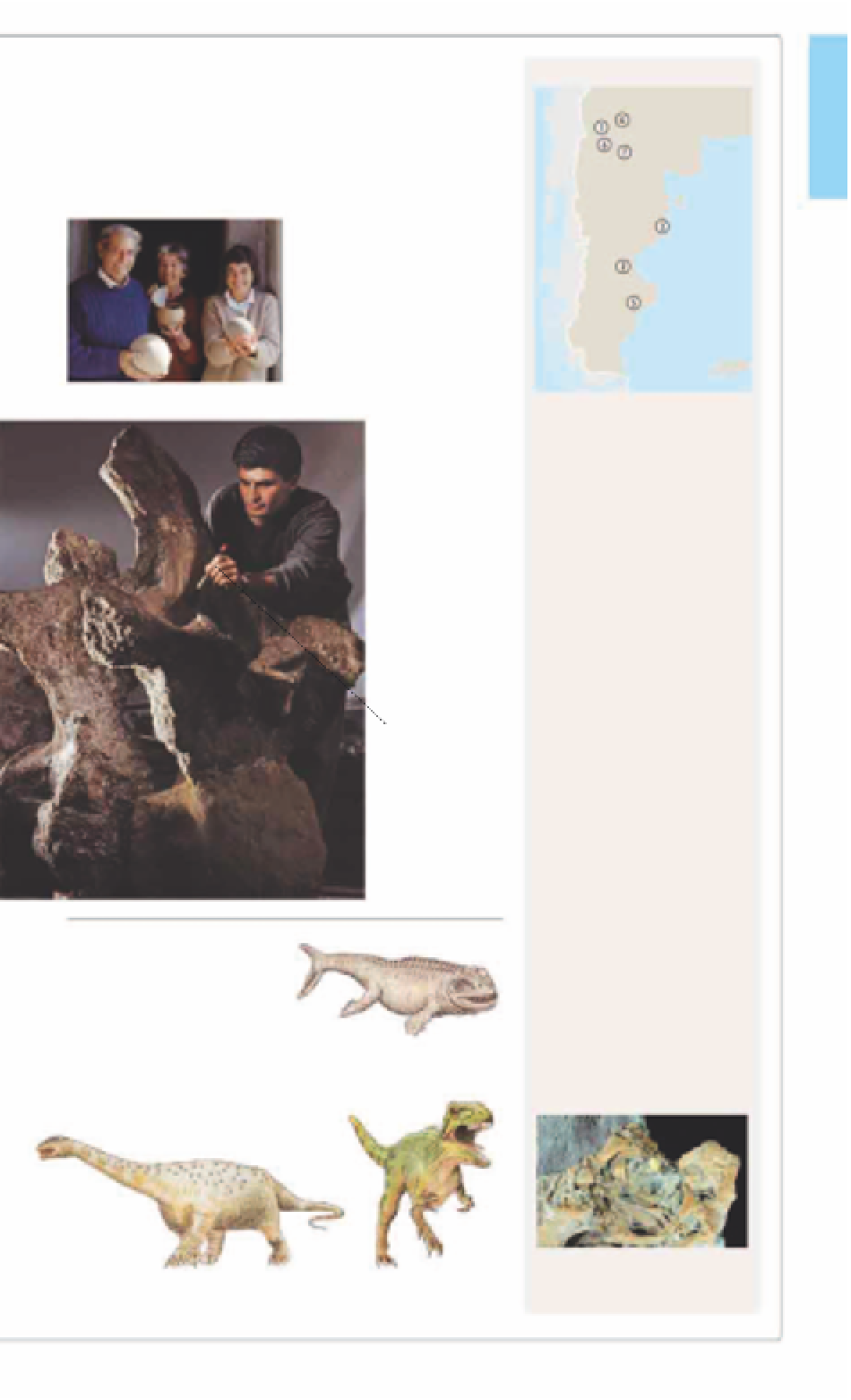Travel Reference
In-Depth Information
The Fossil Finders
Patagonia's biggest finds were first spotted by laymen.
Rancher Guillermo Heredia found Argentinosaurus on his
farm in northwest Patagonia; car mechanic Ruben Carolini
unearthed Giganotosaurus; and the bones of Dakosaurus
were found by visitors to northwest Patagonia in 2005.
The first dinosaur eggs
were excavated from the
world's largest dinosaur
nesting ground in 1997
by scientists in Patagonia.
Another discovery was
by a family in Lamarque
in Patagonia.
Patagonia's Fossil Sites
1
Auca Mahuevo
2
Bosque Petrificado José
Ormachea
(see p233)
3
Bryn Gwyn
4
Lago Barreales
(see p238)
5
Monumento Natural Bosques
Petrificados
(see p233)
6
Plaza Huincul
7
Villa El Chocón
(see p239)
Raúl Vacca
of
Museo
Paleontólogico
Egidio Feruglio
(MEF) in Trelew is a
world expert in the
preparing and
mounting of fos-
silized skeletons.
Important Events
1989:
Argentinosaurus
discovered near Plaza Huincul.
1995:
The huge carnivore
Giganotosaurus unearthed in
Villa El Chocón.
1997:
Dinosaur embryos with
skin tissue intact discovered at
Auca Mahuevo.
1999:
MEF museum opens in
Trelew, showcasing major fossil
finds
(see p229)
.
2000:
Field work begins at Lago
Barreales, Argentina's largest
fossil site.
2005:
Discovery of Dakosaurus,
giant marine crocodile.
2006:
World's largest-known
terror bird, Phorusrhacid,
uncovered in Patagonia.
2009:
Discovery of a 65 million-
year-old Plesiosaurus in El Calafate.
Digging tools
and
excavation brushes
are used to sepa-
rate the fossil from
its entombing sedi-
ments, and then to
clean it.
How They Looked
Argentinosaurus had massive
limbs and a very long neck
and tail. Giganotosaurus was
an agile predator with short
arms and powerful legs.
Dakosaurus andiniensis
had
fins and a fish-like tail.
The ocean-dwelling
Dakosaurus
andiniensis
A Titanosaurus embryo seen within the
surrounding rock
The herbivore
Argentinosaurus
huinculensis
The carnivore
Giganotosaurus
carolinii








































